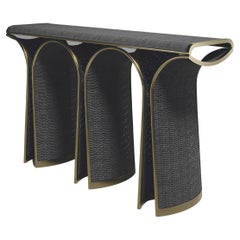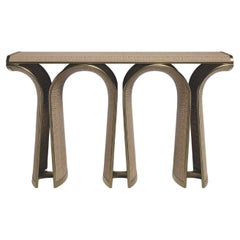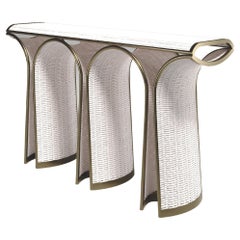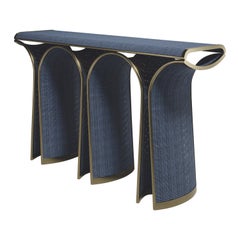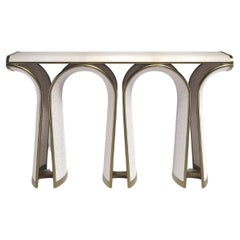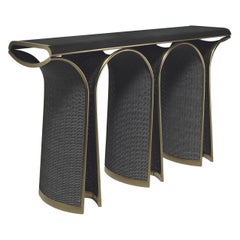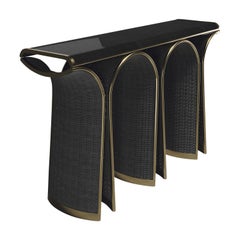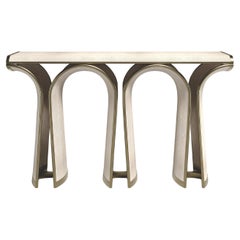R And Y Augousti Console Rattan
21st Century and Contemporary Philippine Art Deco Console Tables
Quartz, Brass
21st Century and Contemporary Philippine Art Deco Console Tables
Quartz, Brass
21st Century and Contemporary Philippine Art Deco Console Tables
Quartz, Brass
21st Century and Contemporary Philippine Art Deco Console Tables
Quartz, Brass
21st Century and Contemporary Philippine Art Deco Console Tables
Quartz, Brass
21st Century and Contemporary Philippine Art Deco Console Tables
Quartz, Brass
21st Century and Contemporary Philippine Art Deco Console Tables
Quartz, Brass
21st Century and Contemporary Philippine Art Deco Console Tables
Brass
People Also Browsed
Vintage 1950s Austrian Mid-Century Modern Chandeliers and Pendants
Brass, Metal
Late 20th Century Italian Mid-Century Modern Wall Lights and Sconces
Art Glass, Murano Glass
2010s Indian Organic Modern Decorative Dishes and Vide-Poche
Bronze
2010s Italian Mid-Century Modern Chandeliers and Pendants
Brass
2010s Dutch Modern Side Tables
Travertine
2010s Mexican Post-Modern Side Tables
Onyx
Early 20th Century Italian Modern Chandeliers and Pendants
Glass
21st Century and Contemporary Indonesian Chandeliers and Pendants
Bamboo
21st Century and Contemporary Italian Modern Sideboards
Steel
2010s Italian Chandeliers and Pendants
Textile, Rattan
21st Century and Contemporary Spanish Minimalist Side Tables
Marble, Travertine
Vintage 1970s Italian Mid-Century Modern Dry Bars
Chrome
Vintage 1970s American Brutalist Shelves
Brass, Chrome
2010s British Organic Modern Wall Mirrors
Brass, Bronze
2010s Italian Modern Credenzas
Marble, Bronze, Brass
21st Century and Contemporary Canadian Modern Credenzas
Marble, Metal, Bronze
R & Y Augousti for sale on 1stDibs
R&Y Augousti was founded in 1989 by husband-and-wife team Ria and Yiouri Augousti. The pair works with pen shell, metal and an array of exotic skins — including ostrich, snake, eel and crocodile — to create Art Deco-inspired furniture that echoes the influences of their unique friends and draws on the experiences they’ve shared on their global travels.
Ria Augousti (née Macasaet) was born in Manila. Her family relocated to Cebu and, at age 15, she went to New York City to study art. She continued her studies in England and graduated from the London School of Furniture Making.
Born in Cyprus, Yiouri Augousti studied architecture at London’s Architectural Association. He was drawn to interior design that reflected a revival of Art Deco that took shape during his years as a young adult.
Ria was working at the interior design firm of John Stefanidis, in London, when Yiouri joined the firm. “We got on like a house on fire,” Ria has said of the beginnings of their relationship. The couple established R&Y Augousti in 1989 and married in 1990. The business grew swiftly — R&Y Augousti moved permanently to Paris in 1994, and in 2011, the couple opened their first American showroom. There, in the New York Design Center, the range of decorative objects on offer from R&Y Augousti included dining tables, side tables and decorative objects such as candleholders and picture frames in shagreen.
The initial popularity that shagreen enjoyed as furniture covering fizzled when the Art Deco era faded. Modernist designer Jean-Michel Frank was an enthusiast of the textured hide, and during the 1960s, Karl Springer covered desks, chairs and tables with it. Ria Augousti wanted to revive shagreen’s use as a finish in one of their very first designs. Their sculptural, sensuous shagreen Sylvie chair, with its slender and towering backrest, makes a statement in any space and has seen a fair amount of praise over the years. The Sylvie has been photographed in a number of high-profile spaces including Alexander Wang's New York City loft apartment designed by Ryan Korban. (And shagreen reemerged as a luxe material among designers and decorators in 2017.)
R&Y Augousti has since expanded into fashion accessories, and drawings by the couple’s daughter, designer Kifu Augousti, have been embroidered on some of the brand’s luxurious handbags.
Find R&Y Augousti tables, seating and decorative objects on 1stDibs.
A Close Look at Art-deco Furniture
Art Deco furniture is characterized by its celebration of modern life. More than its emphasis on natural wood grains and focus on traditional craftsmanship, vintage Art Deco dining chairs, tables, desks, cabinets and other furniture — which typically refers to pieces produced during the 1920s and 1930s — is an ode to the glamour of the “Roaring Twenties.”
ORIGINS OF ART DECO FURNITURE DESIGN
- Emerged in the 1920s
- Flourished while the popularity of Art Nouveau declined
- Term derives from 1925’s Exposition Internationale des Arts Décoratifs et Industriels Modernes (International Exhibition of Modern Decorative and Industrial Arts) in Paris, France
- Informed by Ancient Egypt, Cubism, Futurism, Louis XVI, De Stijl, modernism and the Vienna Secession; influenced Streamline Moderne and mid-century modernism
CHARACTERISTICS OF ART DECO FURNITURE DESIGN
- Bold geometric lines and forms, floral motifs
- Use of expensive materials such as shagreen or marble as well as exotic woods such as mahogany, ebony and zebra wood
- Metal accents, shimmering mirrored finishes
- Embellishments made from exotic animal hides, inlays of mother-of-pearl or ivory
ART DECO FURNITURE DESIGNERS TO KNOW
VINTAGE ART DECO FURNITURE ON 1STDIBS
Few design styles are as universally recognized and appreciated as Art Deco. The term alone conjures visions of the Roaring Twenties, Machine Age metropolises, vast ocean liners, sleek typography and Prohibition-era hedonism. The iconic movement made an indelible mark on all fields of design throughout the 1920s and ’30s, celebrating society’s growing industrialization with refined elegance and stunning craftsmanship.
Widely known designers associated with the Art Deco style include Émile-Jacques Ruhlmann, Eileen Gray, Maurice Dufrêne, Paul Follot and Jules Leleu.
The term Art Deco derives from the name of a large decorative arts exhibition held in Paris in 1925. “Art Deco design” is often used broadly, to describe the work of creators in associated or ancillary styles. This is particularly true of American Art Deco, which is also called Streamline Moderne or Machine Age design. (Streamline Moderne, sometimes known as Art Moderne, was a phenomenon largely of the 1930s, post–Art Nouveau.)
Art Deco textile designers employed dazzling floral motifs and vivid colors, and while Art Deco furniture makers respected the dark woods and modern metals with which they worked, they frequently incorporated decorative embellishments such as exotic animal hides as well as veneers in their seating, case pieces, living room sets and bedroom furniture.
From mother-of-pearl inlaid vitrines to chrome aviator chairs, bold and inventive works in the Art Deco style include chaise longues (also known as chaise lounges) and curved armchairs. Today, the style is still favored by interior designers looking to infuse a home with an air of luxury and sophistication.
The vintage Art Deco furniture for sale on 1stDibs includes dressers, coffee tables, decorative objects and more.
Materials: Brass Furniture
Whether burnished or lacquered, antique, new and vintage brass furniture can elevate a room.
From traditional spaces that use brass as an accent — by way of brass dining chairs or brass pendant lights — to contemporary rooms that embrace bold brass decor, there are many ways to incorporate the golden-hued metal.
“I find mixed metals to be a very updated approach, as opposed to the old days, when it was all shiny brass of dulled-out silver tones,” says interior designer Drew McGukin. “I especially love working with brass and blackened steel for added warmth and tonality. To me, aged brass is complementary across many design styles and can trend contemporary or traditional when pushed either way.”
He proves his point in a San Francisco entryway, where a Lindsey Adelman light fixture hangs above a limited-edition table and stools by Kelly Wearstler — also an enthusiast of juxtapositions — all providing bronze accents. The walls were hand-painted by artist Caroline Lizarraga and the ombré stair runner is by DMc.
West Coast designer Catherine Kwong chose a sleek brass and lacquered-parchment credenza by Scala Luxury to fit this San Francisco apartment. “The design of this sideboard is reminiscent of work by French modernist Jean Prouvé. The brass font imbues the space with warmth and the round ‘portholes’ provide an arresting geometric element.”
Find antique, new and vintage brass tables, case pieces and other furnishings now on 1stDibs.
Finding the Right Console-tables for You
Few pieces of furniture are celebrated for their functionality as much as their decorative attributes in the way that console tables are. While these furnishings are not as common in today’s interiors as their coffee-table and side-table counterparts, console tables are stylish home accents and have become more prevalent over the years.
The popularity of wood console tables took shape during the 17th and 18th centuries in French and Italian culture, and were exclusively featured in the palatial homes of the upper class. The era’s outwardly sculptural examples of these small structures were paired with mirrors or matching stools and had tabletops of marble. They were most often half-moon-shaped and stood on two scrolled giltwood legs, and because they weren’t wholly supported on their two legs rather than the traditional four, their flat-backed supports were intended to hug the wall behind them and were commonly joined by an ornate stretcher. The legs were affixed or bolted to the wall with architectural brackets called console brackets — hence, the name we know them by today — which gave the impression that they were freestanding furnishings. While console tables introduced a dose of drama in the foyer of any given aristocrat — an embodiment of Rococo-style furniture — the table actually occupied minimal floor space (an attractive feature in home furniture). As demand grew and console tables made their way to other countries, they gained recognition as versatile additions to any home.
Contemporary console tables comprise many different materials and are characterized today by varying shapes and design styles. It is typical to find them made of marble, walnut or oak and metal. While modern console tables commonly feature four legs, you can still find the two-legged variety, which is ideal for nestling behind the sofa. A narrow console table is a practical option if you need to save space — having outgrown their origins as purely ornamental, today’s console tables are home to treasured decorative objects, help fill empty foyers and, outfitted with drawers or a shelf, can provide a modest amount of storage as needed.
The rich collection of antique, new and vintage console tables on 1stDibs includes everything from 19th-century gems designed in the Empire style to unique rattan pieces and more.
